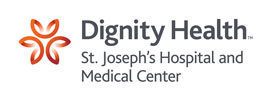Dural Graft Equivalent Comparison Trial
| Status: | Recruiting |
|---|---|
| Conditions: | Women's Studies |
| Therapuetic Areas: | Reproductive |
| Healthy: | No |
| Age Range: | Any |
| Updated: | 12/14/2016 |
| Start Date: | January 2012 |
| End Date: | December 2018 |
| Contact: | Michael Bohl, M.D. |
| Email: | michael.bohl@bnaneuro.net |
| Phone: | 602-406-3181 |
This research study is to find out which types of dural grafts used during surgery for
Chiari Malformations are superior. We believe that autologous dural grafts are superior to
non-autologous grafts.
Chiari Malformations are superior. We believe that autologous dural grafts are superior to
non-autologous grafts.
The study compares autologous grafts vs. non-autologous grafts. Non-autologous grafts
include synthetics and grafts from animals. Autologous grafts have a better side-effect
profile than non-autologous grafts. We believe this improved side-effect profile will result
in a decreased incidence of reoperation for post-operative infections and post-operative
fluid collections (pseudomeningoceles and seromas). Study is open to all non-pregnant minor
and adult subjects. Subjects must have symptomatic Chiari Malformation described as > or
equal to 6mm descent of the cerebellar tonsils below the foramen magnum with accompanying
headaches and/or neurologic findings (arm pain/weakness, myelopathy, etc.). After the
12-month follow-up is completed on the first 100 subjects there will be an interim analysis
of the results in order to determine whether one of the treatments has a statistically
superior outcome. If a statistically superior outcome is noted, the trial will stop after
being reviewed by a data monitoring committee. If no statistically significant difference is
seen at one year, the study will continue until the 12-month follow-up is completed on the
200th patient.
include synthetics and grafts from animals. Autologous grafts have a better side-effect
profile than non-autologous grafts. We believe this improved side-effect profile will result
in a decreased incidence of reoperation for post-operative infections and post-operative
fluid collections (pseudomeningoceles and seromas). Study is open to all non-pregnant minor
and adult subjects. Subjects must have symptomatic Chiari Malformation described as > or
equal to 6mm descent of the cerebellar tonsils below the foramen magnum with accompanying
headaches and/or neurologic findings (arm pain/weakness, myelopathy, etc.). After the
12-month follow-up is completed on the first 100 subjects there will be an interim analysis
of the results in order to determine whether one of the treatments has a statistically
superior outcome. If a statistically superior outcome is noted, the trial will stop after
being reviewed by a data monitoring committee. If no statistically significant difference is
seen at one year, the study will continue until the 12-month follow-up is completed on the
200th patient.
Inclusion Criteria:
- Minor or adult males and females
- Symptomatic Chiari Malformation
- Greater or equal to 6mm descent of the cerebellar tonsils below the foramen magnum
- Headaches and/or neurologic findings (e.g., arm pain/weakness, myelopathy, etc.)
Exclusion Criteria:
- Pregnancy
We found this trial at
1
site
350 W Thomas Rd
Phoenix, Arizona 85013
Phoenix, Arizona 85013
(602) 406-3000

Principal Investigator: Robert F Spetzler, M.D.
St. Joseph's Hospital and Medical Center St. Joseph's is a nationally recognized center for quality...
Click here to add this to my saved trials